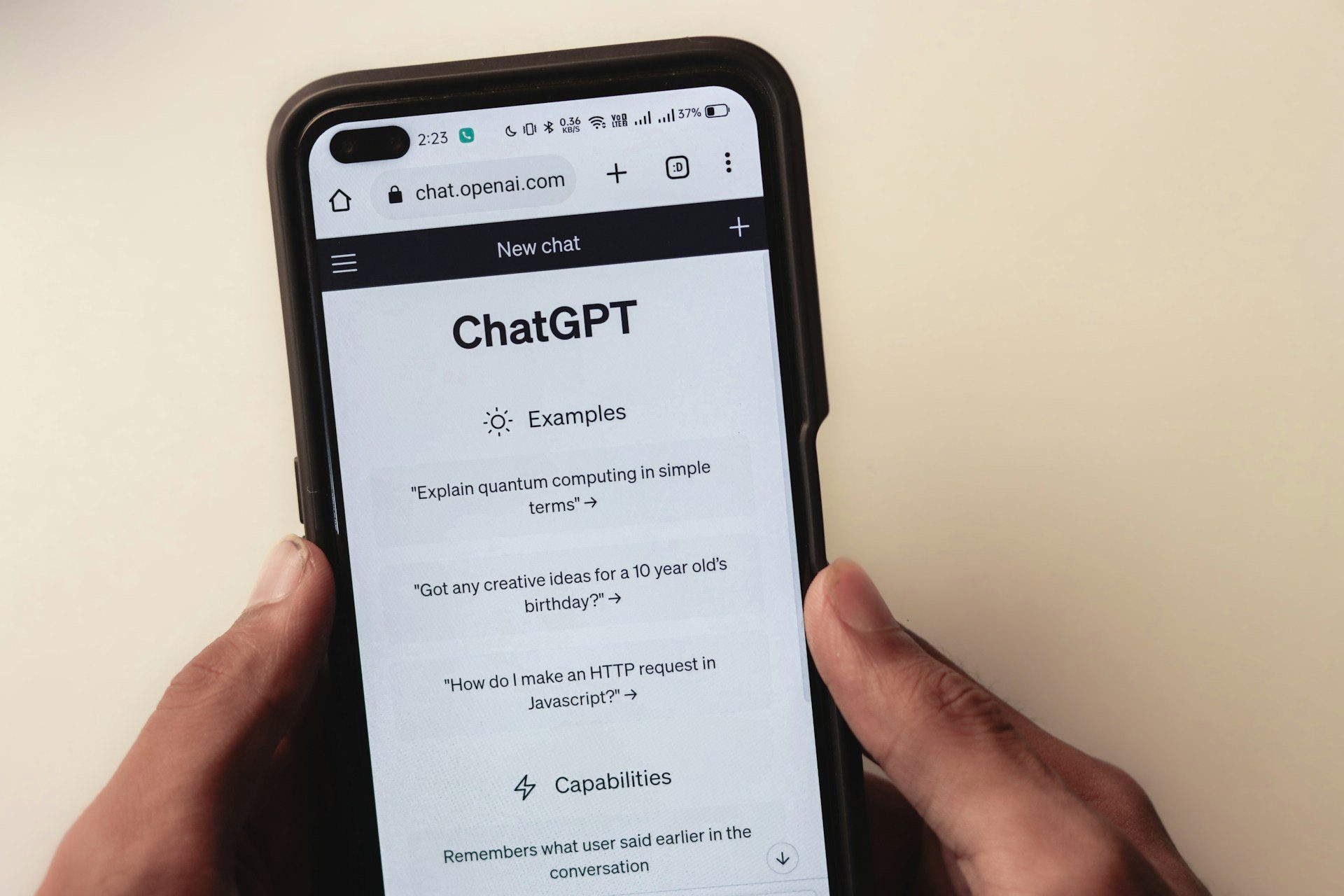Strategiesitzungen sind etwas ganz Besonderes, und obwohl man dabei viel erreichen kann, fragen Sie sich vielleicht: "Wer sollte an einer Strategiesitzung teilnehmen?"
Die Antwort lautet kurz gesagt: jeder, der ein Interesse am Ergebnis Ihrer Strategie hat... nun ja, bis zu einem gewissen Grad.
Das können CEOs, CFOs, CMOs, VP of Sales and Marketing, Produktmanager, Leiter der Geschäftsentwicklung sein - im Grunde jeder der wichtigsten Akteure.
Doch abgesehen von der einfachen Antwort können Strategiesitzungen - und die Frage, wer an ihnen teilnehmen sollte - etwas nuancierter und umfassender sein als nur Personen, die eine Stellenbezeichnung haben, die auch ein Akronym ist. O.K.?
Was ist eine Strategiesitzung?

Lassen Sie uns ganz einfach beginnen. Eine Strategiesitzung ist eine strategische Planungssitzung, bei der viele Interessengruppen, Entscheidungsträger und Einflussnehmer innerhalb einer Organisation zusammenkommen, um die Unternehmensstrategie oder eine Projektstrategie zu besprechen.
Dazu gehören in der Regel die Geschäftsleitung, das Betriebspersonal und Vertreter aus verschiedenen Abteilungen.
Ziel des Treffens ist es, Ideen zu entwickeln, Lösungen für organisatorische Herausforderungen zu erarbeiten, Taktiken für die Umsetzung von Strategien zu diskutieren und Pläne zu erstellen.
Während in den meisten Unternehmen regelmäßige Besprechungen, Synchronisierungen, Nachbesprechungen usw. stattfinden, ist eine Strategiesitzung eine Planungs- und Wegbesprechung zur Planung von Projekten. Sie kann sogar dazu dienen, eine Zusammenfassung oder einen Fahrplan für die Zukunft des gesamten Unternehmens zu erstellen.
Sie sind nützlich und ermöglichen es verschiedenen Personen aus vielen Bereichen des Unternehmens, zusammenzukommen und Ideen auszutauschen.
Dabei kann es sich um lange Veranstaltungen oder auch um eine Reihe von kurzen Veranstaltungen handeln. Das Endziel ist eines - eine Strategie!
Was können Sie mit einer Strategiesitzung erreichen?

In einer Strategiesitzung können Sie die aktuellen Ziele des Unternehmens erörtern und einen Aktionsplan entwickeln, der dem Unternehmen helfen wird, seine Ziele zu erreichen. Außerdem können Sie potenzielle Risiken und Chancen ermitteln, über die Zuweisung von Ressourcen entscheiden, Leistungskennzahlen festlegen, die Fortschritte gegenüber den Plänen überprüfen und vieles mehr. All dies trägt dazu bei, eine effektive Strategie zu entwickeln, die Ihrem Unternehmen langfristig zum Erfolg verhilft.
Eine Strategiesitzung kann konzeptionell sein. Sie können dazu dienen, Ideen zu entwickeln und allgemeine Strategien zu besprechen.
Wenn Sie eine klare Vorstellung davon haben, wo Sie stehen und wo Sie hinwollen, kann eine Strategiesitzung auch detaillierter sein und sich mit den Einzelheiten der Zielerreichung befassen. Sie eignet sich hervorragend für die Festlegung von Zielen auf einer übergeordneten Unternehmensebene.
Wen sollte ich zu einer Strategiesitzung einladen?

Die Teilnehmer sollten sorgfältig ausgewählt werden, wobei darauf geachtet werden sollte, wer am besten zur Diskussion beitragen kann.
Hier sind einige Beispiele von Personen, die teilnehmen könnten:
Senior Management Team
Die leitenden Angestellten des Unternehmens sollten anwesend sein, um Hinweise, Einblicke und Feedback zu geben. Sie tragen entscheidend dazu bei, dass die Sitzung auf dem richtigen Weg bleibt und alle Ziele erreicht werden, während ihre Anwesenheit auch dafür sorgt, dass die Ideen und Konzepte nicht zu "abgehoben" oder im Rahmen der allgemeinen Unternehmensziele unvorstellbar sind.
Leitende Angestellte könnten versucht sein, sich einzuschalten und die gesamte Sitzung zu leiten, aber bei einer Strategiesitzung sollte es letztlich um Zuhören und transparente Kommunikation gehen und nicht darum, dass eine Person vorschreibt, was zu geschehen hat.
Abteilungsleiter
Die Abteilungsleiter werden benötigt, um sicherzustellen, dass die Abteilungen vertreten sind und ihre besonderen Perspektiven in die Diskussion einbezogen werden.
Auch wenn alle Abteilungsleiter die Möglichkeit haben, sich einzubringen, ist es in der Regel eine gute Idee, die Einladungen strategisch zu gestalten. Überlegen Sie, welche Abteilungen den größten Einfluss auf die Organisation haben, und setzen Sie Prioritäten für diese Abteilungen.
Operatives Personal
Das Betriebspersonal kann wertvolle Einblicke in die aktuellen Prozesse und Abläufe sowie in potenzielle Verbesserungsmöglichkeiten geben.
Sie können dafür sorgen, dass das gesamte Treffen und die Gesamtstrategie auf dem Boden der Tatsachen bleiben - nicht unbedingt in Bezug auf die Geld- und Brass-Steuer selbst, sondern in Bezug auf die Zustellbarkeit und die Logistik als Ganzes.
Betrachten Sie sie als Ihren vernünftigen Freund, der Sie auf den Boden der Tatsachen zurückholt, wenn Sie auf die verrückte Idee kommen, nächsten Monat durch die Sahara zu wandern.
Externe Berater und Experten
Externe Berater können unschätzbare Ratschläge und Fachkenntnisse liefern, die intern nur schwer zu beschaffen wären. Sie können auch dazu beitragen, eine breitere Perspektive einzunehmen, da einige ihrer Erfahrungen von außerhalb der Organisation stammen werden.
Sie sind besonders aufschlussreich, wenn es darum geht, sich über die neuesten Trends und Forschungsergebnisse in der Branche auf dem Laufenden zu halten und einen Einblick in die Wettbewerber zu erhalten.
Auch wenn Sie für die Teilnahme dieser Personen bezahlen müssen und dies bei den Tarifen der Experten nicht ganz billig ist, kann die Investition eines externen Beraters auf lange Sicht Geld, Zeit und Energie (wahrscheinlich sogar Tränen der Mitarbeiter!) sparen.
Fürsprecher der Arbeitnehmer
Es ist schön und gut, diese unglaublichen Strategien und Ziele zu entwickeln, aber Sie müssen wissen, was Ihre Mitarbeiter und Angestellten tatsächlich schaffen und tun können.
Die Aufrechterhaltung der Arbeitsmoral ist ein wichtiger Bestandteil eines jeden Unternehmens, und alle Mitarbeiter sollten die Möglichkeit haben, ihre Gedanken, Gefühle und Sorgen mitzuteilen.
Auch wenn die Anwesenheit aller Mitarbeiter zu Reibungsverlusten führen könnte - sowohl zeitlich als auch ressourcenmäßig -, können Sie durch die Einladung eines Vertreters derjenigen, die die Arbeit erledigen, und nicht nur des Abteilungsleiters, abschätzen, ob der Zeitplan realisierbar ist und welche Hindernisse auftreten könnten.
Denken Sie daran, dass es einen schmalen Grat zwischen Negativität und konstruktiver Kritik gibt, daher sollte die Wahl des Mitarbeiters sorgfältig überlegt sein. Bringen Sie auch nicht einfach die "Ja"-Person aus dem Büro mit. Jemand, der es allen recht machen will, ist vielleicht nicht der beste Vertreter für alle Mitarbeiter.
Die Stimme des Kunden
Auch wenn es vielleicht nicht möglich ist, einen tatsächlichen Kunden zu Ihrer Strategiesitzung einzuladen, und sei es nur, weil er kein bezahltes Teammitglied ist, ist es gut, jemanden einzuladen, der in irgendeiner Form für Ihren Kunden, Ihre Kunden, Ihr Publikum und Ihre potenziellen Kunden sprechen kann.
Diese Erfahrung muss auf mehr als nur "Gefühlen" beruhen, sondern auf jemandem, der Erfahrung mit quantitativen, qualitativen oder beiden Arten von Daten über Ihre Endnutzer hat. Jemanden an Bord zu haben, der seine Meinung mit harten Daten untermauern kann, kann von unschätzbarem Wert sein, wenn es darum geht, die Bedürfnisse und Wünsche der Kunden zu ermitteln.
Es mag überwältigend klingen, alle an einem Ort zu versammeln, um die Strategie zu besprechen, aber diese Hauptakteure können dazu beitragen, dass Ihr Unternehmen in die richtige Richtung steuert. Es müssen auch nicht alle zur gleichen Zeit beteiligt sein. Solange es einen Input gibt und die Möglichkeit, sich zu verschiedenen Teilen der Planung zu äußern, kann dies sowohl in Echtzeit als auch asynchron geschehen.
Wie man eine Planungssitzung durchführt

Jetzt, da wir eine genauere Vorstellung davon haben, wen wir zu dem Treffen einladen wollen, stellt sich die Frage, wie wir das Treffen organisieren und durchführen wollen.
Die Durchführung einer erfolgreichen Strategiesitzung erfordert eine sorgfältige Vorbereitung und Planung. Die eigentliche Sitzung ist wahrscheinlich der einfachste Teil!
Planen Sie im Voraus, indem Sie die Ziele für die Sitzung festlegen, eine Tagesordnung und einen Zeitplan erstellen, entscheiden, wer eingeladen werden muss, sicherstellen, dass alle Teilnehmer vorbereitet sind und sich einig sind, bevor sie teilnehmen, den Teilnehmern Aufgaben zuweisen und die Entscheidungen am Ende der Sitzung abschließen.
Soll ich alle gleichzeitig zu einer Strategiesitzung einladen?

Ganz einfach: Nein!
Auch wenn die Liste der einzuladenden Personen recht ausführlich ist, müssen nicht alle gleichzeitig zu einer Strategiesitzung eingeladen werden.
Es ist wichtig, dass die teilnehmenden Personen verschiedene Fachgebiete repräsentieren, einen sinnvollen Beitrag leisten und Entscheidungen mit langfristigen Auswirkungen treffen können.
Die Einladung von zu vielen Personen kann jedoch zu Verwirrung führen und den Prozess verzögern. Versuchen Sie, nur diejenigen einzuladen, deren Wissen und Erfahrung für strategische Entscheidungen notwendig sind.
Indem Sie dafür sorgen, dass alle Beteiligten in einem ausgewogenen Verhältnis anwesend sind, können Sie sicherstellen, dass die Sichtweisen aller Beteiligten gehört werden und Entscheidungen gemeinsam getroffen werden können.
Es ist auch wichtig, die Zahl der Teilnehmer überschaubar zu halten - zu viele Personen können zu Verwirrung führen und den Prozess entgleisen lassen.
Indem Sie sicherstellen, dass die richtigen Personen bei Ihrer Strategiesitzung anwesend sind, können Sie sicherstellen, dass die richtigen Entscheidungen getroffen werden, und Sie ersparen sich eine Menge Ärger (ganz zu schweigen von Zeit, Energie (und möglicherweise noch mehr Tränen bei den Mitarbeitern)!
Gibt es aber eine Möglichkeit, alle einzubeziehen?

Ganz genau! Die Zunahme der Arbeit auf remote hat dazu geführt, dass Strategiesitzungen virtuell abgehalten werden können und Online-Meeting-Recorder können das Problem lösen, ALLE Stimmen in der Sitzung zu haben... ohne dass zu viele Personen anwesend sind.
tl;dv kann Ihnen auch dabei helfen, ein Strategiemeeting zu organisieren, an dem nur wenige Personen beteiligt sind, aber trotzdem alle zu Wort kommen.
Mit diesem Tool kann jeder im Unternehmen die Aufzeichnungen von Zoom oder Google Meet herunterladen und in aller Ruhe ansehen.
Sie können sogar die langweiligen Teile herausschneiden (oder die empfindlichen Teile!)
Richten Sie einfach die Aufzeichnung ein, und Ihre Strategiesitzung wird automatisch transkribiert (in mehr als 20 Sprachen!).
Bearbeiten Sie Google Meet Aufnahmen mit Leichtigkeit, bearbeiten Sie Zoom Aufnahmen ohne Aufwand, heben Sie Schlüsselmomente hervor, indem Sie sie mit einem Zeitstempel versehen und nur auf die wichtigen Teile beschränken .
Sie können sogar einzelne Personen oder ganze Abteilungen mit Push-Benachrichtigungen auf Slack versehen, so dass sie nur dann benachrichtigt werden, wenn ihr Beitrag erforderlich ist.
Es ist auch ein hervorragendes Instrument für die Nachbereitung, da es vollständige Transparenz und Aufzeichnungen über alles Besprochene, Geplante und sogar über den Zeitplan ermöglicht.
Wie kann ich die Ergebnisse einer Strategiesitzung weitergeben?

Eine weitere Besonderheit von tl;dv und der Umsetzung einer asynchronen Strategie für die Zusammenarbeit besteht darin, dass eine fachkundige Aufzeichnung erforderlich ist, aber das Tool übernimmt diese Aufgabe für Sie und sorgt dafür, dass sie effektiv genutzt werden kann.
Keine verlorenen Notizen mehr.
Keine fehlinterpretierten Aktionspläne.
Keine Missverständnisse mehr!
Es ist alles sowohl in Video- als auch in schriftlicher Form vorhanden.
Was wurde beschlossen, wann muss es getan werden, und wer wird es tun?
Damit verfügen Sie über eine ausgezeichnete Checkliste für das Follow-up und die Verfolgung der Ergebnisse der Pläne insgesamt.
Noch besser ist, dass Sie diese direkt in CRM-Systeme einspeisen und die Pläne an das gesamte Unternehmen weitergeben können.
Auf diese Weise können sich alle an den Unternehmenszielen beteiligen, nicht nur die, die bei der ursprünglichen Sitzung anwesend waren!
Strategiesitzungen sind großartig... aber nicht jeder muss dabei sein!

In der Vergangenheit waren große Stakeholder-Sitzungen zwar durchaus üblich, aber sie kosteten auch viel Zeit, Ressourcen und Geld.
Ich meine, können Sie sich vorstellen, was das Catering und der Kaffee für diese Art von Veranstaltungen kosten?!
Diese teuren, zeitaufwändigen Veranstaltungen, die eine unglaubliche Planung erforderten, werden in der heutigen Arbeitswelt remote einfach nicht mehr benötigt.
Strategiesitzungen, die per Videokonferenz abgehalten werden und bei denen clevere Tools wie tl;dv zum Einsatz kommen, haben die Arbeitsweise von Unternehmen für immer verändert und werden es auch in Zukunft tun.
Indem Sie die Anzahl der Teilnehmer an einer Besprechung reduzieren, aber dennoch volle Transparenz und Beteiligung aller Mitarbeiter aufrechterhalten, können Sie eine effiziente und effektive, vertrauensvolle Strategiesitzung durchführen, die tatsächlich dazu beitragen kann, Projekte voranzutreiben.
Sie können alle einbeziehen, ohne dass sie dabei sind! Sie könnten sogar im Urlaub sein!
Das ist demokratisch für alle: keine umständliche Zeitplanung mehr, keine Zeitverschwendung mehr beim Reisen!
So werden Strategiebesprechungen besser und intelligenter. Wenn wir jetzt noch das Buffet in unser Home Office geliefert bekämen, wäre das großartig.
Mit wem müssen wir darüber sprechen?














